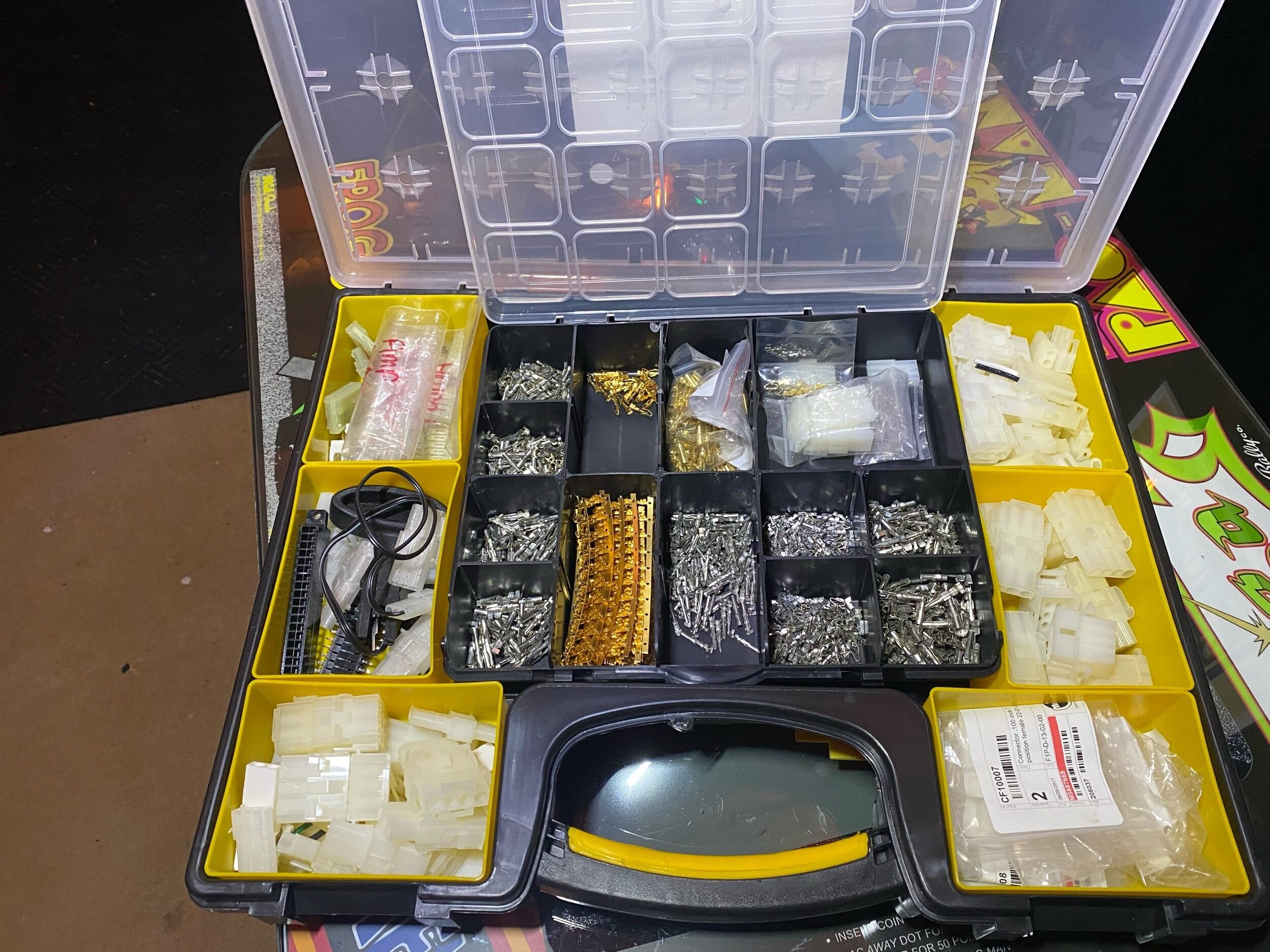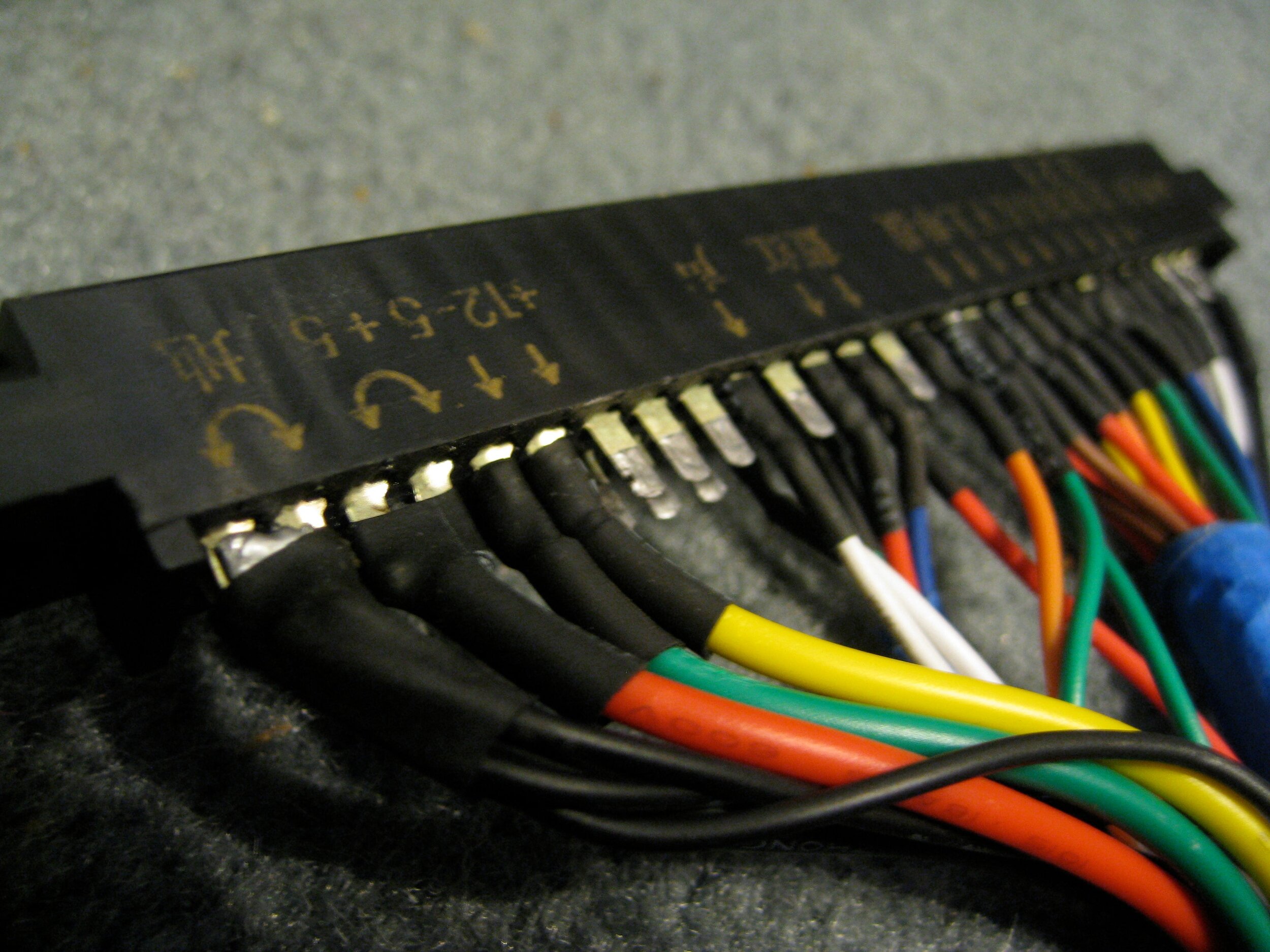Originality Vs Pragmatic Convenience
Detail-oriented collectors might focus in on sourcing exactly the right connectors, something like the Red AMP connector that was manufactured in the middle-80’s. Profit-oriented operators would often direct-solder wires to board pins or use electrical tape and shrink tubed solutions in order to keep their amusement machines in service.
I’m not wholly opposed to a wire nut or compression slice with the justification that most of the wiring in our homes use these methods inside of electrical boxes for switches and plugs.
But mostly for arcades and pinballs I try to use connectors when it makes sense.
Finding Models
Connector-housings are actually pretty easy to “eyeball and approximate”. Taking measurements or looking at the spec, there are alot of connector-housing models on thingiverse to support peoples’ electronics projects. The two sets I found below were some of the most impressive in terms of quality and closeness to originals.
3-pin Molex
https://www.thingiverse.com/thing:4139433
https://www.thingiverse.com/thing:4131380
2-pin Molex
https://www.thingiverse.com/thing:4139450
https://www.thingiverse.com/thing:4139409
Searching around, it turns out the CAD models for Molex (and other) connectors are available from the official sources
For example, the commonly used .093” pin connectors often found on the AC lines of arcades:
Plug Side
Receptacle Side
Broader categories
- you will recognize alot of these from wiring harnesses in cars, common appliances in addition to arcade and pinball uses.
AMP Dual Leaf 28 Position (like a JAMMA card edge connector)
The file formats are common CAD formats that can be converted to printable .STL files pretty easily.
I’m not sure around the legality of using them but for the sake of this post we are going to assume hobby use one-offs won’t be a problem.
Finally, GrabCAD has a really handy library of all sorts of engineering CAD models, connectors included.
FINDING THE CONDUCTORS
There are so many different connector and mating-conductor standards used in Arcades & Pinballs, I’m not going to even attempt a comprehensive list but here are a few that you will probably run into frequently.
MOLEX .156
Molex .156 are often used in Arcade monitors (RGB, G, Sync) connections. The .156 size is also what most Bally, Williams, Data East, White Star, Sega and SAM Pinballs use for power interconnects. Though the pinball applications are typically as IDC (vampire tap-style) connectors. Molex is a solid upgrade and will mate perfectly with the .156 header pins on those boards.


















